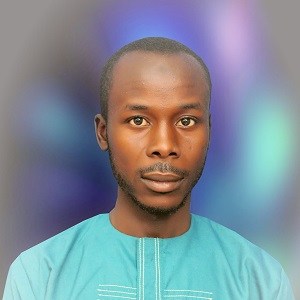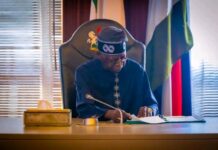
On Friday September 27, 2019, the Department of Mass Communication, Bayero University, Kano, celebrated four decades of mass communication in Kano State in grand style.
A public lecture themed “Four Decades of Mass Communication in Kano: Celebrating History, Productivity and Growth” was organized by the Mass Communication Students’ Association (MAKOSA), Bayero University, Kano and presented by Dr Bala Muhammad of the same department.
Partly historic and partly inspirational, the presenter traced the date the flag of the department was hoisted in 1978, the pioneer students, the great minds it has produced, the media organizations, national and international, the department made its presence felt and even some late students and teachers of the department, who left their footprints on the pages of the history of the department, were posthumously honoured.
The department is exactly a 40-year-old. Forty years is a long time. Those who witnessed the birth of the department are conversant with what it means by the interplay between mobility and society and how social change has impacted the whole engagement – new trends have evolved, working equipment decreased and the world has been transformed into a global village.
Similarly, social forces do play major roles in determining social movement and how members of a society mould their identity, values are formed or de-formed – whether physically or mentally. All these years, the department must have undergone profound changes.
To appreciate the changes, for example, we have to view journalism now and then; and how new technologies in the production of newspaper, for instance, are redefining the whole exercise that today even newspaper page layout is done using computers. Years back, newspaper production was incredibly expensive and time-consuming.
Journalism in digital age and the concept of structural changes/adjustment are reshaping the media. Unlike in those days when news production was only carried out by professionals, today everyone seems to be a journalist out of instinct to uncover, tell, and share stories.
Martin Belam argued that the emergence of new technologies like live blog (that tells of minute-to-minute happenings); linked data (a collection of hyperlinked data and facts); and living stories (a system that gives organizations opportunity to build a hub page for disseminating pieces of information), among others, is not only redefining the media but also exposing the mainstream media to danger.
From Dr Bala Muhammed’s lecture, it is apparent that the department has succeeded in producing numerous communication experts as well as scholars in the field, with many of them practicing their craft at various national and international media organizations or conducting researches in the field of global media.
Despite the feats achieved by the department, as well as similar departments in other universities in the region, in training great minds in journalism or media in its entire, two things characterize the north in relation to the media: ‘misrepresentation’ and ‘under-reportage’.
Although it depends on the power of one’s argument, it seems the north is either misrepresented or underreported, or both. Positive stories from the region are either ignored, brushed aside or are given passing references; and at the same time false statements are peddled to leave negative impression of the region in the minds of readers or audience.
It is true journalists, or the media in general, shape the way people understand or view culture. Choice of words alone is capable of denting the image of a people especially the north that has a long-standing history of being misrepresented.
Of recent, Reuters published a news story titled “Victims of north Nigerian institution share stories of terror”. The story was about a purportedly self-regulated ‘correctional centre’ in Kaduna State. Shackled, sexual abuse, hung up and broken arms and shoulders are some of the phrases that made up the story. The story was mischievously structured to show the region in a bad light. The centre, or ‘institution’ as the report named it, was placed on a par with marriage or traditional institutions. Reuters wanted its readers to believe that ‘institution’ was dug out of the north’s moral values vault.
The above and more prompted me to ask some questions. What is the mission of the department and has that been achieved? Has social responsibility been achieved through the media in the north? How do the media shape the region? And what is the future of the media in the north?
The first question is self-explanatory as the department has succeeded in training tens of thousands of journalists and communication experts. Ibrahim Shemes, Jameel Yusha’us, Maikabas, Bala Muhammeds, Minjibirs, etc, the department’s producets are there to vindicate this argument.
Below is an interview with Dr Abubakar S. Minjibir of the Department of Mass Communication, Bayero University, Kano, on the issue in question.
Sir, despite tens of thousands of journalists the department has trained, the north is still misrepresented or underreported, why?
Minjibir: The issue is not exclusive to the Department of Mass Communication, Bayero University, Kano. Apart from the department, over the years other similar departments from various universities and other high institutions of learning across the region have been training journalists.
Of course the Department was the first in the north. It was later followed by University of Maiduguri, the Ahmadu Bello University, Benue, among others.
The issue of misrepresenting or underreporting the north can be as a result of other things. All the same what the institutions produce may not be sufficient enough to cater for the communication needs of the northern region. One thing that we have to understand is that there are relatively fewer media institutions in the north. It is only of recent with the advent of new radio and television stations that people are given the chance to practice. Yet the number is not capable of covering the whole northern region.
There are several national and international media organizations, not of the northern origin, operating in the north. Some people may choose to misrepresent the region for some reasons best known to them; but what is more important is that media institutions and journalists in the region should live up to expectations and counter the misrepresentations. This is the only way the media and journalists in the region can change the narratives.
From your experiences as a don, how do the media shape the north?
Minjibir: The mass media influences socio-political life of the north. It impacts on almost all aspects of social life of the people, be it political, religions, economic or social life. Traditionally the media informs, educates and entertains.
The people in the region get a lot of information in different areas of calling. They may learn about a new drug that has just been developed, healthcare methods, agricultural production, education, security, politics, governance; or cultural development in general. In almost everything, the mass media keys in to educate people.
Everything being equal, what should be the future of the media in the north?
Minjibir: Well, there are a lot of prospects. At least the north is witnessing exponential increase in the number of radio and television stations all-over the region. For example, in Kano State broadcast environment there are about 18 radio stations and five television channels; and the number of both will keep on increasing.
Certainly, media multiplicity can be a very good aspect of development. If, for example, you take the south, it has an edge on the north because the south has a good number of media organizations that always advance the interest of its people.
With the prospect of getting more and more media organizations in the north, I believe the interests, aspirations and the needs of the people of the north is likely going to be better achieved and enhanced.
Thank you
Minjibir: my pleasure.
In the modern world, the media may be the most powerful sector of an economy. A well informed people lead to a balance society characterized by effective democracy and social justice. Considering the symbolic powers in the media, with well-equipped media institutions, the north can change the narratives.
Abdulhamid wrote via abdullahiyassar2013@gmail.com
Twitter yassara2013
08145901322
The views expressed in this article are the author’s own and do not necessarily reflect the editorial policy of Sky Daily





































